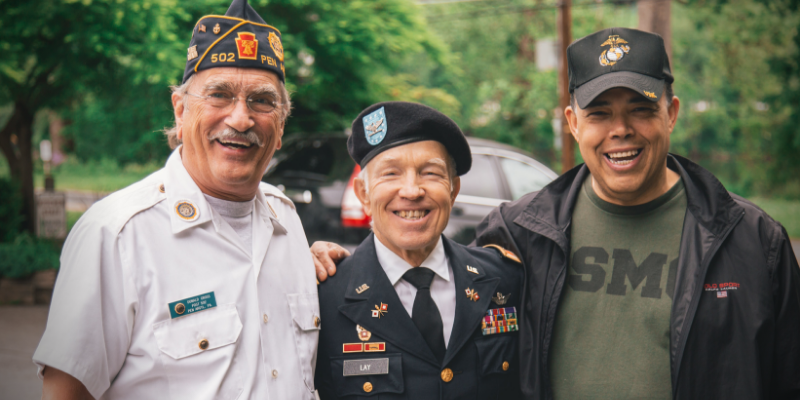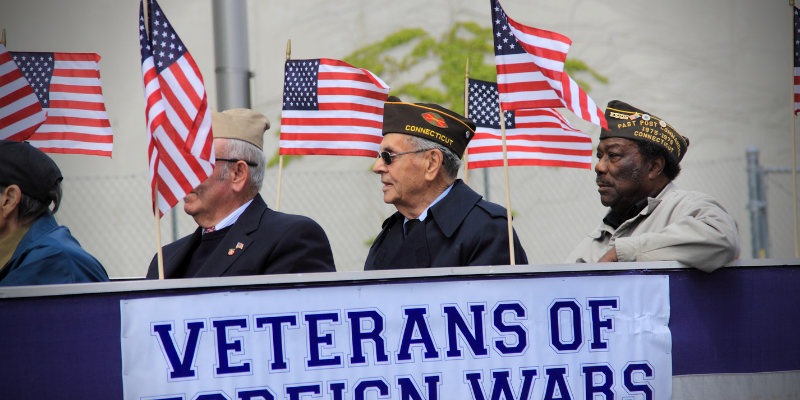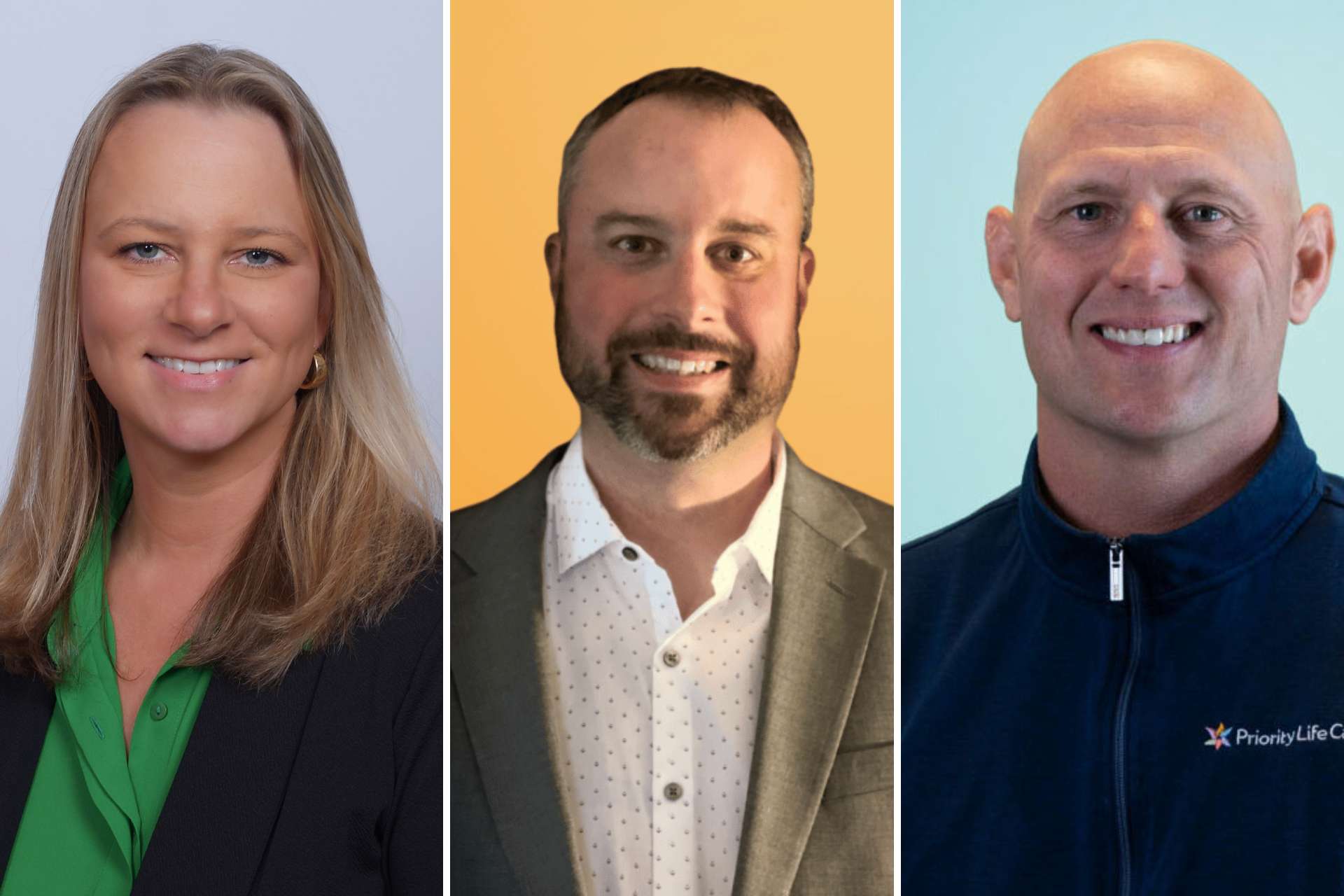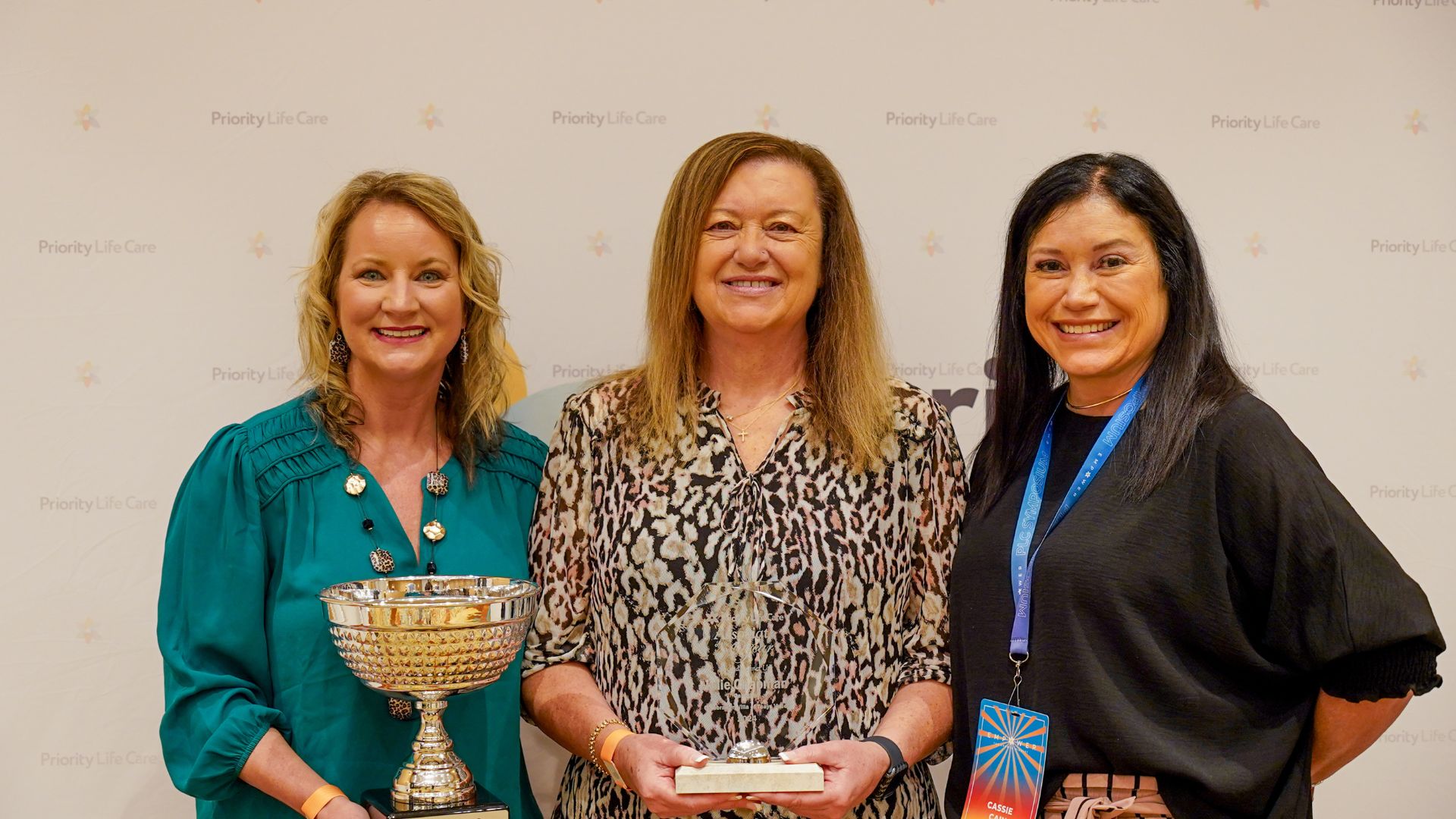Many aging veterans who need help with daily activities are unaware of the benefits that the VA has to offer. Fortunately for veterans and their surviving spouses, there are benefits available to help alleviate the financial burden that comes with long-term care in an assisted living community.

Aid & Attendance
One of the most overlooked financial resources for veterans in assisted living facilities is the Aid and Attendance benefit. Offered through the Department of Veterans Affairs, Aid and Attendance is a monthly, needs-based payment above and beyond the VA pension that can help cover the costs of long-term care.
Aid and Attendance is for veterans who need the aid of another person to safely complete the activities of daily living. Examples can include the need for assistance in dressing and undressing, eating, grooming, using the toilet, and bathing. Without the ability to perform these tasks on their own, an individual can’t live independently and therefore requires the aid of another individual. A veteran’s need for this benefit doesn’t need to be the result of their military service.
If a veteran has been diagnosed with Alzheimer’s Disease or another form of dementia, Aid and Attendance is typically awarded. This is because the disease usually requires individuals to be in a protected environment to stay safe and well.
The funds received from Aid and Attendance benefits are not awarded specifically to cover the cost of living in an assisted living community, but they can be used for that purpose.
This website explains in clear language how the Aid and Attendance pension works. As of 2017, A&A pension can provide up to $1,1830 per month to a single veteran, $2,170 for a veteran with a spouse, $1,176 per month to a surviving spouse, or $2,903 per month to a couple who are both veterans. A veteran with a sick spouse is eligible for up to $1,438 per month. That’s a lot of much-needed money that can be put towards the cost of assisted living each month.
Eligibility May Be Easier Than You Think
Navigating eligibility requirements can be overwhelming for veterans and their loved ones, especially if an illness has already set in. Fortunately, eligibility for assistance may be simpler than many might assume.
Many veterans and their families are unaware of this benefit, but even those who know about the Aid and Attendance pension tend to overlook it as a resource if the veteran is still independent, but has a spouse who is ill. In this situation, if the spouse’s medical expenses completely deplete the couple’s combined monthly income, the veteran can still file as a veteran with an ailing spouse.
As this New York Times blog post on the New Old Age makes clear, “To qualify, a veteran need not have suffered a service-related injury. He or she only had to have clocked at least one day of his or her 90-day minimum military service during a time of war, and need caregiving for activities of daily living.”
As of 2019, to be financially eligible for Aid & Attendance:
- A single veteran must have countable income under $22,577 a year
- A veteran with a dependent or spouse must have countable income under $26,765 a year
This worksheet will help you calculate “countable income.”
In order to qualify for A&A benefits, a veteran (or spouse) must also meet one of the following criteria:
- Need assistance with activities of daily living (ADL) such as bathing, dressing, eating, or adjusting prosthetic devices;
- Be bedridden;
- Reside in a long-term care community due to mental or physical incapacity
- Have severe visual impairment, with a correction of 5/200 or less in both eyes, or concentric contraction of the visual field to 5 degrees or less.
Eligibility varies by state, but the benefits can be significant. Contact your local Veteran Affairs office or an elder law expert to determine whether you or your loved one qualifies. Because health care benefits and later life housing are so critical for veterans, it’s helpful to review all the options currently available.
How to Apply
You can start by contacting your local Priority Life Care Community. They can help you through the process and also put you in touch with the local VA representative in your area.
The forms required to apply for A&A benefits can also be found on the official VA website. Once you’ve completed the forms and compiled the required documents, you should make copies and keep the originals.
The application and process for A&A benefits can take quite some time to complete. Gathering the necessary paperwork and supporting documents can take families weeks, and it often takes around 9 months to receive approval once the application has been submitted. However, if the applicant is over age 90, you can request expedited approval with your application.
Submitting a complete and error-free application can help speed up the process – you’ll be able to avoid delays that result from needing to gather more paperwork or make corrections. Since applying for benefits can be a complicated and confusing process, many families enlist the assistance of a Veterans Benefits Advisor to guide them through the process.
What Aid and Attendance Does and Does Not Cover
While the A&A benefit does not cover the entire cost of an assisted living community, it can help pay for some of the services that they provide. This is a perk for a veteran or veteran’s spouse who requires long-term care.
It’s important to note that A&A benefits are paid in addition to the monthly pension amount and won’t be paid without eligibility for the Pension. But since A&A allowances increase the monthly pension amount, people who aren’t financially eligible for a basic pension may become eligible for pension at the increased rates.
Basic Pensions: A Solution for Rising Care Costs
VA Pensions are a monetary benefit for veterans over the age of 65. These pensions are not specifically awarded to cover the cost of an assisted living community, but the funds may be used however the veteran sees fit. If the veteran isn’t yet in an assisted living community, the funds can be used for services like home care aids or adult daycare facilities.
The basic pension is awarded to healthy veterans over the age of 65 who financially qualify as low-income or meet other special requirements.
Debbie Burak, founder of VeteranAid.org explains, “The VA classifies any veteran at the age of 65 to be permanently and totally disabled regardless of your physical state. The classification of ‘disabled’ entitles the veteran or widow to a Basic Pension if he/she meets the net worth and income criteria. The same is true for the surviving spouse. No Physician’s Statement is required for filing for Basic Pension.”
Who’s Eligible
Determining whether or not a veteran is eligible to receive a pension can be challenging, especially when it comes to understanding all of the financial requirements.
To be eligible to receive a Basic Pension, a veteran must have served at least 90 days of active duty, with at least one of those days being during active wartime.
Additionally, the veteran must meet at least one of the following requirements:
- Be at least age 65 with limited or no income
- Be totally and permanently disabled
- Be a permanent resident in a nursing home facility
- Receive Social Security Disability Insurance
- Receive Supplemental Security Income
How to Apply
You can apply for Veterans Pension benefits online or download, print, and complete the VA Form 21P-527EZ, “Application for Pension”. Once the paperwork is completed and the required documents are collected, you can mail your application to your local Pension Management Center.
If you prefer to collect or submit forms in person, you can visit your local regional benefit office.
Navigating the financial needs of veterans who need assisted living care is always a stressful endeavor for loved ones. Thankfully, these benefits can help alleviate the financial burden that comes along with costly long-term care.




